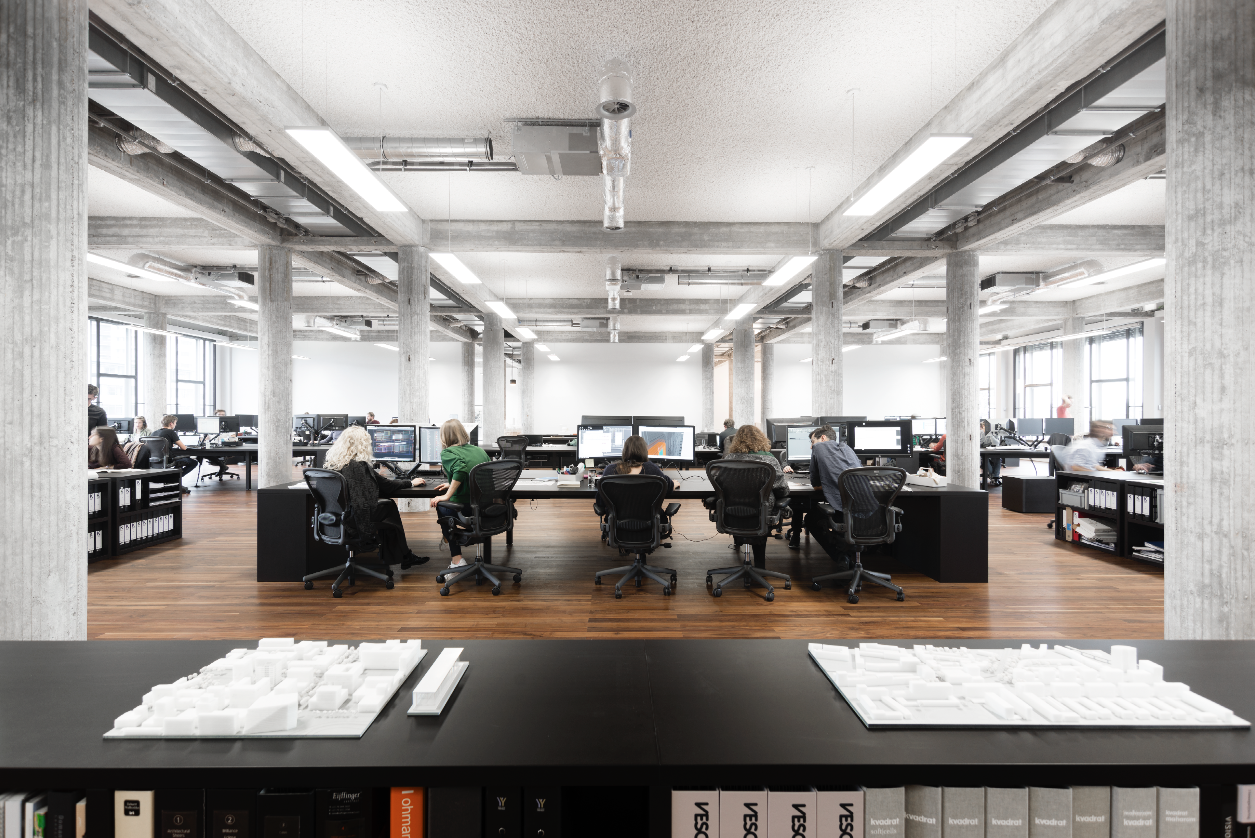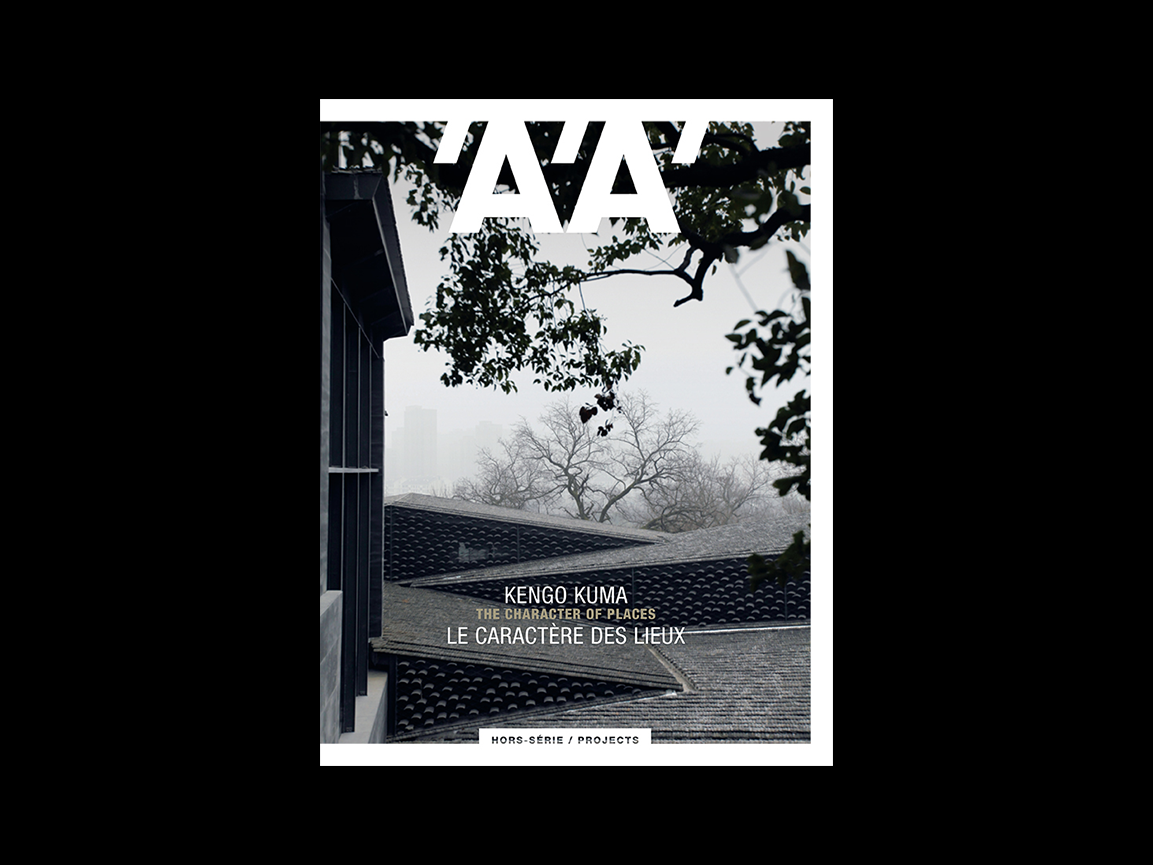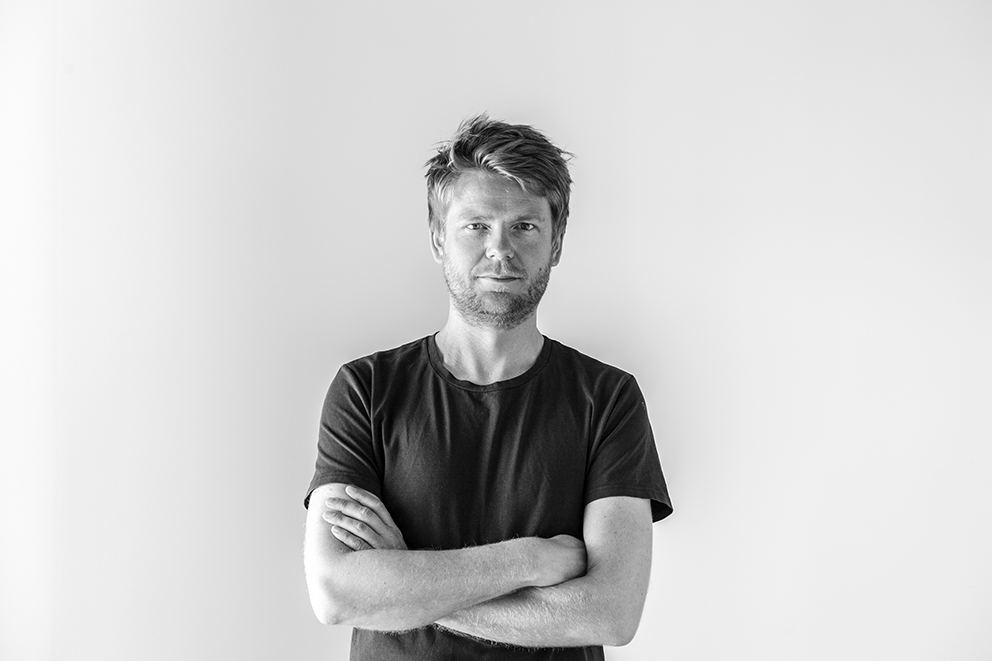“Master storytellers”, interview with Kees Kaan (KAAN Architecten)
Today heading the 104-strong KAAN Architecten, an international firm with offices in the Netherlands, France and Brazil, Dutch architect Kees Kaan (born 1961) began his independent career with fellow student Felix Claus, founding Claus en Kaan Architecten in Amsterdam in 1988. In 1997 he moved to Rotterdam to set up a sister Claus en Kaan office with Vincent Panhuysen and Dikkie Scipio, who soon became partners. In 2014, after 26 years together, Felix Claus and Kees Kaan took the amicable decision to split, leading to the creation of KAAN Architecten, which three years later moved into new headquarters in Rotterdam’s former De Nederlandsche Bank (Henri Timo Zwiers, 1950–55). It was there, on the bustling banks of the Nieuwe Maas River, in beautifully detailed surroundings designed by the firm itself, that AA met up with Kees Kaan to discuss the importance of narrative, design by presentation, and the architect’s role as a communicator in complex situations.
By Andrew Ayers

L’Architecture d’Aujourd’hui: You graduated in 1987 from the Technical University in Delft, where you teach today. What led you to choose architecture as a career? Was it something you wanted to do from a very young age?
Kees Kaan: No, not at all! As a child I used to spend my summers in the southwest Netherlands, in Zeeland, where my family hails from. It’s the landscape of my roots – I still go there at weekends and whenever I have the chance, and in fact I am building a holiday house there. It’s a very strong landscape that displays a fascinating balance between natural forces and civil engineering, since it’s below sea level of course. I had a romantic boy’s idea about Dutch civil engineers – what heroes! So my plan was to go to Delft to study civil engineering. When I got there, I was given accommodation in a student house with about 20 others, many of whom were studying architecture. As an engineer I was having to do an awful lot of maths; in the evenings I would see what they were studying and it seemed so much more interesting. I thought, “Damn! I’m in the wrong place!” After two months I switched to the architecture faculty.
AA: What kind of teaching did you receive at Delft in the 1980s?
KK: Architectural education at Delft covers a very broad spectrum of all the professions involved in the creation of the built environment. Then there are the trends and tendencies that come and go over the years. When I was studying I felt we were in a strange kind of interbellum, a sort of vacuum… [Jaap] Bakema died during my first or second year. Aldo van Eyck was still around, but had reached a stage where he was no longer talking about his own work but had become angry with the younger generation. He was very much against the Italian-style rationalism that had taken hold in Delft, and hated Postmodernism too, which he called ‘rats post and other pests.’ [Laughs.] [Herman] Hertzberger was still there, and Carel Weeber too; he was more rationalist, while Hertzberger was coming from the van Eyck school. And then there was [Rem] Koolhaas, sort of shimmering on the horizon. Hertzberger was losing influence; the Italian rationalists under Weeber were constant; and Koolhaas was becoming more influential even though he wasn’t actually at the school. But all the students were watching what he was doing. I remember Hertzberger giving a talk one evening in the main lecture hall, which was packed to the rafters. He was up in flames against Koolhaas: at one point he took off his shoe and started talking about the comfort of his footwear, which was very wide and roomy, compared to Koolhaas’s shoes, which were very narrow with a sharp toe, since he was a young man at the time.
AA: What was your reaction to all these competing visions?
KK: I have to say I found it all rather confusing at that age. So, at one point before I graduated, I began working at the office of one of the professors, Rudy Uytenhaak Architectenbureau, because I felt that, before being able to take a stand, I needed simply to learn how you make a window frame, how you make a floor plan, how you make a building.
AA: You met Felix Claus at Delft. When did you found Claus en Kaan together?
KK: In 1988. Our first project was a depot for the public works department in the South of Amsterdam. It combines the functionality of a humble warehouse with the opulence of a bungalow – its appearance contradicts its function.
AA: Today you are known for much larger-scale and often very complex projects. When did the leap in scale occur?
KK: Housing projects began to come our way at the beginning of the 1990s, and as time went on they got steadily bigger – 100 units or more. Then, at the beginning of the millennium, the European tender system came into force. That’s basically what made it possible for us to make the leap. When I moved to Rotterdam, in 1997, Felix stayed in Amsterdam, and we decided to split the country in half: he’d take the North and I’d do the South. We didn’t want to be in a position where clients decided for us who got the project. Felix still had a lot of housing projects at that point, while our Rotterdam office started pushing hard for European projects. After losing a lot of tenders, we suddenly cracked how to do them, and in a short space of time won contracts for the municipal building in Breda, the Dutch Embassy in Maputo and the Netherlands Forensic Institute, all of which were delivered before 2005. So we suddenly jumped to a scale of 10,000 sqm for the municipal offices and 30,000 for the forensic institute.
AA: When did you begin working in France and Belgium?
KK: We won the competition for the Royal Museum of Fine Arts in Antwerp in 2003, for the Chambre de Métiers in Lille in 2007, and we submitted a proposal for the Gare d’Austerlitz competition in Paris in 2006. We’ve also done two housing projects in Rennes, others in Lille and Nantes, and the Institut des Sciences Moléculaires d’Orsay at Paris-Saclay. We’re currently working on a hotel-and-office project in Aubervilliers as well as a call for ideas for the underground spaces at La Défense.
AA: How important has teaching been to your growth as an architect?
KK: Extremely! I taught at the Academy in Amsterdam for a while, and then started teaching at Delft in 2006. I introduced my Complex Projects Chair in 2012 after becoming more and more intrigued by architecture’s explaining capacity in complex conditions. I tell my students that today we’re no longer master builders but master storytellers: architects facilitate and steer the dialogue between the multitude of parties involved in a project, be they users, owners and investors on the client side, or architects, engineers and specialists on the design side. We architects are the ones who facilitate communication between all the stakeholders in these complex situations: if there isn’t an architect they can all detest, they can’t communicate! If there isn’t an architect who has made a presentation, they cannot talk to each other – we facilitate the conversation between the city, the developer and the neighbourhood. This is a fascinating aspect of our work. So I started developing it more and more, both in the office and my teaching studios. Today at KAAN Architecten we don’t make designs, we make presentations: the design emerges through the process of representation and storytelling.
AA: Do the presentations systematically take the same format or do they evolve?
KK: They evolve of course. And you can never make it as rigorous as you’d like. But at the university in Delft I gradually managed to make it very rigorous. I’m talking about the method,
of course, not the content – the content is very open. But now we’ve managed to have 100 individual graduation projects that are all presented using the same methodology and can be easily compared. I also make the students work in groups because that way they are forced to justify everything and come up with a story for it. Whether the story is true or false isn’t important as long as it’s consistent.
AA: Is this method something that evolved through your teaching or did it begin in your practice?
KK: It started here at the office, and then when I began teaching at Delft I was annoyed by the fact that everybody had a different presentation, everything got thrown away afterwards and you ended up with nothing at the end. I explained to the students that I wanted to have something tangible at the end – at least a book – so we had to start doing things together. We’ve now reached a point where students graduate with a carefully curated installation as well as a book.
AA: This approach also gets students to work in the same way they’ll have to out in the real world.
KK: Of course. Students often say things like, “In my building we’re going to do X, Y and Z.” And I always say: “It’s not your building. The first thing you have to learn is never to say ‘my building’ in a presentation. It’s for a client, and your job is to come up with a story explaining why that building should be the way you say it should. You have to be able to explain it, and that story should become the driver of your project.”
AA: At what point do you think you became conscious of this idea of narrative as the driving force?
KK: A long time ago. Right from the beginning of our professional practice, collaboration has been very important. When you collaborate, you have to articulate your intentions: everything
that is not mutually understood and agreed is thrown out. That’s why our early projects were very simple and minimal, because personal fluffy ideas were always killed. We did a lecture in Tokyo once, attended by architect Riken Yamamoto. We later asked him to write a preface to our exhibition at the Aedes Gallery in Berlin: in his text he remembered that lecture, and how impressed he was by the fact that everything in our work can be explained. The narrative is of paramount importance, it drives the design.
AA: Do you feel there are any weaknesses to this approach?
KK: When ‘selling’ our work in the competition system is concerned, yes. Our method is entirely ideas-based: we’re not selling icons or a signature style. What we’re providing to clients is a tried-and-tested professional approach that is very thorough and can lead to extremely interesting results. We are very strong when we can present our competition proposals or when there’s a dialogue with the clients, but when it’s a faceless submission we’re much less successful. Our strength is also our weakness.
AA: What is the profession of architect for you?
KK: My vision of the profession is very influenced by the Dutch context. I usually give a lecture to students coming from abroad where I explain the situation here from a topographical point of view. Humans aren’t collaborators by nature, but in the Netherlands they have to be. If you have a piece of land in Germany, you can start digging a hole and building your house as you see fit. If you do that here, you immediately get wet feet, because the water comes straight up, so you have no choice but to phone your neighbour and say, “Hey! Shall we do it together?” You have to take a much bigger area of land, pump it dry, and then you can do something with it. You’re not only having to build your building but also your land. Look out of the window: those islands there on the other side of Rotterdam would disappear if you took the dykes away. Everything you see is built: the whole city is one big building in which we make a distinction between public and private elements. And, in my Dutch way of thinking, architects take an articulated position in this very complex collaboration between public and private interests. We can make the difference between building an environment that is very nice for a community to live in as opposed to one that isn’t so great. Architecture’s social role is primordial, otherwise it has no meaning. There has to be a public interest at stake.
AA: Does that mean architects should also be policy makers?
KK: We do have influence on policy here in the Netherlands, and I believe that we should be consulted. At a global scale, I think the systems we’ve developed in the West to make cities are relatively successful: organising society so as to achieve a balance where everything comes together in synergy while allowing people their own private space. This is the goal. In my Complex Projects Chair, I always explain to students that I didn’t decide to call it that because we want to make complex things but because it’s about finding simple solutions in complex situations. We have to understand the complexity of the situation in order to make a simple building that can work within that specific setting and contribute in a positive way.
Read the full interview and more in the AA Project special issue published in February 2020, available on our online store.



